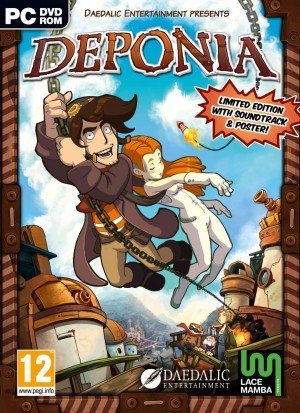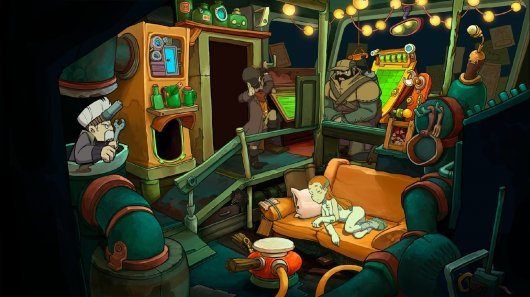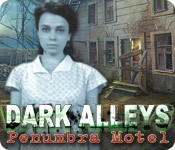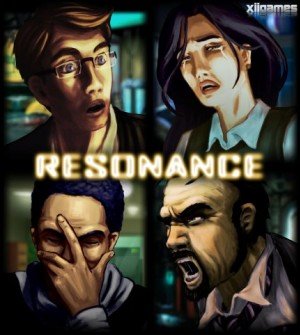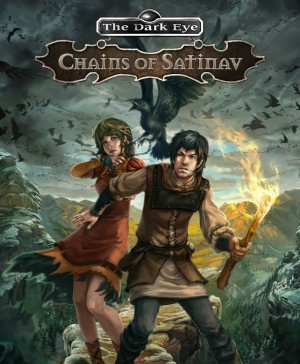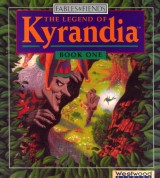Review for Deponia

I’ve played some trashy adventures in my day, but none quite as trashy as Deponia. No, wait, that’s a compliment! At least, it’s a statement of fact, as this game takes place, quite literally, on a trash heap. The landscape is made up of trash. The items you stuff in your pockets are trash. The puzzles… well, actually, those aren’t half bad. It may have some rough edges, but this unflinchingly traditional point-and-click adventure from Daedalic Entertainment has a lot to like—garbage and all.
Deponia’s protagonist is a wanderlust named Rufus, a young man who’s singularly fixated on getting off his junk-filled planet as soon as humanly possible. His only escape option is Elysium, a utopia floating far above. Problem is, no one has ever managed to get there. The game opens with Rufus prepping his latest escape attempt, which involves lighting a parcel of dynamite to shoot a makeshift escape pod into the sky at the very moment an orbiting Elysian vessel flies past. What could go wrong?
Everything, of course, and very quickly. This early attempt ends with Rufus falling back to the surface with a pretty Elysian princess, Goal, in tow. Rufus sees her as his ticket out of here (and also hopes to make her his new girlfriend), but he’s not the only Deponian with his sights set on the pretty damsel in distress. First Rufus must convince the townsfolk to release the unconscious Goal to his custody, a deceptively complicated task riddled with puzzle-solving that ends up taking more than half the game. With this finally achieved, he’s free to tout the still incapacitated princess across the rubbish-strewn countryside to another possible escape route. But when other, questionably trustworthy Elysians enter into the mix, a larger plot begins to show itself—larger than this one game can address, in fact, as Deponia is just the first installment of a planned trilogy.
From the artwork to the people to the humor, everything in Deponia is just a bit off, and for the most part it works. The steampunk cartoon art style depicts a gleefully oddball world made up of the garbage dropped from above. (Fun fact: “deponie” means “landfill” in German.) The 2D hand-drawn aesthetic is more refined than in last year’s Edna & Harvey: The Breakout, but equally colorful and distinctive, featuring a number of idiosyncratic supporting characters who help bring Deponia to life. Take Rufus’s nemesis, his ex-girlfriend Toni: a sarcastic chain smoker who sports a frumpy patched overcoat over a pair of denim overalls, and perpetually nags at Rufus to wash the dishes, clean up after himself, and get a job. Nearly every character in this game is equally specific (even those who don’t have to be) with their own traits, quirks, and backstory. This, along with the in medias res opening, really makes Deponia feel like a world that existed before the opening credits ran—which, in a game about the main character’s desperation to leave and eventual realization that he may be on the wrong track, makes a difference. And while the game has only three main locations, each looks sufficiently different from the last and time shifts from daylight to evening to dusk as Rufus reaches them, giving a nice sense of movement and scope to his quest.
The game’s cartoon style wholeheartedly lends itself to robust animations, but I found much of the game to be disappointingly static. To be fair, many of Rufus’s simple actions are well animated and there are a handful of extended slapstick sequences (usually the comedic results of his ineptitude), but conversations have practically no animation at all. Since dialogue tends to drag on (and Deponia has a lot of it), this lack of gesture really stands out. Especially annoying: characters often stand idle even as the script strongly implies that they’re supposed to be moving around. Such inconsistency between spoken word and visual action suggests that corners were cut during development or, at the very least, the artists and writers weren’t on the same page in putting together these scenes. Either way, it’s a letdown in a presentation that’s fairly polished otherwise.
The lack of in-game movement is made up for somewhat by the cinematic cutscenes scattered throughout. Cinematics have a slightly different look than everything else; the perspective is flatter and the character depictions are just a bit off from their playable counterparts, as if you’re now peeking in on the game’s web-comic doppelgangers in motion. When a cutscene commences, the difference is noticeable, but in general the two art styles mesh well.
The interface is traditional point-and-click with a few handy shortcuts tucked in, such as the ability to scroll with the mouse wheel to open the inventory, or to press the scroll wheel to display all of a room’s hotspots (very useful in such cluttered environments!). For the left-brained among us, keyboard shortcuts are available, too. The game has way fewer interactive possibilities than Daedalic’s frenetic Edna & Harvey, but you will collect a good number of inventory items and sometimes need to combine these in unusual ways to solve puzzles. Although its disorderly backgrounds are true to the landfill setting, Deponia sometimes falls into the annoying adventure game pitfall of displaying items that seem like they should be useable, but aren’t. (As an example, at one point Rufus must look high and low for a “container” when a pot, a coffee cup, and a handful of other seemingly appropriate receptacles are in plain sight.)
Difficulty ramps up as Deponia progresses, with a few simpler puzzles easing you in before the more complex, multi-layered ones begin to surface. Even the challenging puzzles follow a certain logic that’s not unexpected in a world built out of trash, but many require more than a little out-of-the-box thinking. Inventory manipulation, dialogue riddles, and mechanical puzzles are all represented here, and many involve multiple steps across several environments, harkening back to the “good old days” when attention spans were a bit longer and we didn’t have cheats at our fingertips. Even so, they’re generally puzzles that can be solved without a walkthrough, and that’s satisfying provided you have the patience. Puzzle fans should enjoy these offerings, especially those partial to the offbeat logic of games like Monkey Island.
Deponia also has a smattering of pattern- and logic-based minigames that can be skipped without penalty. I resorted to this once when I knew what the solution should be but, after much trying, couldn’t figure out how to achieve it (and I was grateful for the option to do so). Unfortunately, this skip option is missing from Deponia’s most infuriating puzzle: a maze through a mineshaft that can only be navigated by trial and error. Adding insult to injury, the chart you’re supposed to decipher to solve this offers no clues or instructions, not even a close-up view, and the navigation sequence plays out with no way of pausing it to compare it to the chart. Though sometimes difficult, the rest of Deponia’s puzzles are at least fair, so this one seems horribly out of place. You’ve been warned.
The game took me about eleven hours to play. It's a decent length but sadly unbalanced, with more than half the game spent in Rufus’s despised town of Kuvaq. For a game whose premise is to get off Deponia, an awfully long time is spent wandering the streets Rufus is sick of, and as the first chapter stretched on my own inability to escape started to sour me on the experience. I suppose I was just as relieved as Rufus to finally get out of there, but considering my mounting frustration, this character identification came with a price.
Though Deponia has a linear structure overall, the game has points of non-linearity, particularly during the lengthy town segment. Such freedom is a blessing because there’s always something new to try when you’re stuck, but also a curse because inadequate cluing might leave you unsure what you’re trying to achieve. Most locations and characters remain accessible long after you’ve used up what they have to offer, which greatly increased my backtracking as I struggled through Kuvaq’s convoluted final obstacle. Don’t misunderstand; it’s a wonderfully layered puzzle, one I wished I’d had the patience to figure out on my own once I understood how all the pieces connected, but a disconcerting lack of direction and my own restlessness sent me in search of a walkthrough to speed things up. Fortunately, once Rufus gets out of town the pace picks up nicely. I found the second half of the game much more satisfying than the first.
The game’s uneven pacing is echoed somewhat in its storytelling, with characters sometimes going on about things that seem not to matter and whole story threads being dropped without a backward glance. In particular, quite a fuss is made about Rufus’s father, who somehow managed to escape Deponia years ago (abandoning his son in the process), but he’s abruptly dismissed in the game’s second half and his greater role isn’t even hinted at. Chekhov once said that a gun that appears at the beginning of a story must go off before the end. The same holds true here; even if Deponia was conceived as the first slice of trilogy, it’s also a standalone game and should hold up as such. Which brings me to a much more egregious flaw: the completely unsatisfying ending. It’s not exactly a cliffhanger, but it’s a total downer. While the finale undoubtedly sets up the sequel, it’s never fun to feel like you’ve spent all this time to make essentially no progress.
As for the story in general, I didn’t love it and didn’t hate it. Deponia’s setting is unique and the instances of oddball humor (like the grand outburst of a robot obsessed with bubble wrap, or the banjo-strumming hobo who serenades at the start of each chapter) certainly make for memorable moments. But the premise of a young man wanting to leave home, see the world, and get the girl is fairly well worn and its execution in Deponia didn’t wow me. To borrow that old creative writing adage, I often felt characters’ feelings and motivations were being “told” and not “shown,” with lukewarm results, and I didn’t buy the Rufus and Goal love story at all. Deponia’s puzzles are definitely stronger than its story (which is not to say it’s a bad story, just not particularly noteworthy). Of course, it may have more impact in the original German. In general the translation seems competent—none of the lines really befuddled me or made me cringe—but there were plenty of moments where I probably should have been laughing but wasn’t, and I’m unsure if the translation or the source material is to blame.
One major example of the not-quite-right writing comes in the characterization of Rufus himself. People around him keep calling Rufus out for being self-centered and obnoxious, but he didn’t strike me that way at all. He comes across as an accident-prone dreamer with big plans, a Guybrush Threepwood or Roger Wilco type. (Have I simply become desensitized to self-centered, obnoxious heroes?) Sure, he takes whatever’s not nailed down to further his escape plans and has no qualms about stealing or destroying other people’s property in the process, but that’s par for the course in this genre. So this is a case where I’m not sure what to make of what Deponia’s trying to tell me. Some supporting characters’ motivations are also hard to swallow, particularly Goal’s; she’s not all that convincing as the feisty heroine / love interest (certainly no Elaine Marley). None of these are game-ruining problems, but this issue of not quite connecting with the writing surely prevented me from becoming too deeply invested in Deponia’s story.
Like with the plot, I neither loved nor loathed the voice acting, though I did count far too many instances of actors misreading lines with improper inflection or emphasis for the context. The music I started out liking: Deponia has a few strong themes, like the adventurous fanfare that plays on the title screen, and a later jumble of instruments and record scratches that sounds like a musical depiction of a junkyard. But my enthusiasm waned as it became clear that these few themes were all the game had to offer, the soundtrack becoming very repetitive. I also ran into two sound-related issues that negatively impacted my playing experience. One was a cacophony of voice loops and sound effects designed to build up during the course of a complicated puzzle, which became so grating that I had to turn off my speakers for a while. The other was an overbearing processing effect applied to the lines of the helmet-wearing Elysian soldiers, which consistently hurt my ears.
So, Deponia: trash or treasure? It’s neither all of one nor all the other; the game has flaws but also a solid list of positives. Though Rufus’s quest across Deponia can drag at points, the game’s art style is appealing, most of its puzzles are clever and engaging, and the overall experience makes for a largely enjoyable adventure. Daedalic continues to show that they understand this genre and know what makes it tick, and as a result, fans of old-school cartoon adventures will likely consider Deponia a junkyard find.
WHERE CAN I DOWNLOAD Deponia
Deponia is available at:
- GOG -90%
- HumbleBundle
- Amazon


